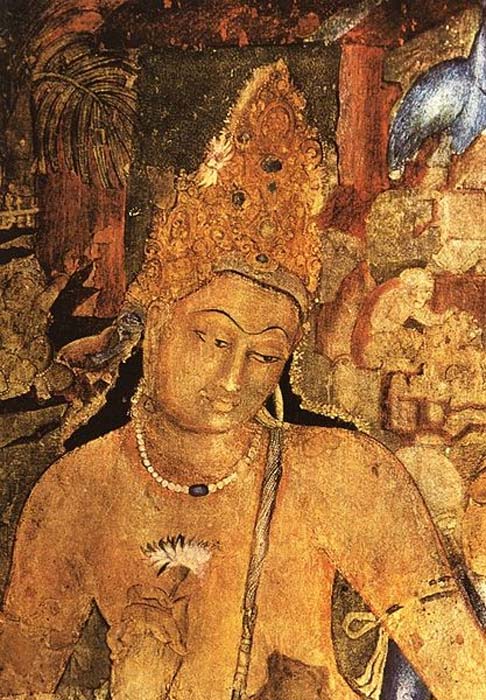The Gupta Empire was an ancient Indian empire that existed between the 3rd and 6th centuries AD. During this time India advanced, especially culturally. Achievements in architecture, sculpture, and painting influenced later styles and spread far beyond the borders. And Gupta Kings are still remembered for their military might, goodwill, and artistic endeavors.
This empire was the political successor of the Maurya Empire, though it did not control as much land as its predecessor. Nevertheless, the Gupta Empire was able to keep the northern part of India politically united for a period of time, and its territories included parts of central and southern India as well at certain times.
The Maurya Empire collapsed in around 180 BC, following the assassination of Brihadratha Maurya by one of his generals, Pushyamitra Shunga. During the reign of Ashoka, i.e. the 3rd century BC, the Maurya Empire reached its largest territorial extent, and was in control of almost the entire Indian subcontinent. As a result of the empire’s collapse during the 1st half of the 2nd century BC, there was a power vacuum, which was filled by the emergence of various smaller states. These states were constantly at war with each other. This situation persisted for 500 years, until the founding of the Gupta Empire around 320 AD.
Who Were the Gupta Rulers?
With regards to the ancestry of the Gupta rulers, little is known. It is likely that they had been landowners who rose to prominence in what is today the southern part of Bihar, which, prior to the rise of the Maurya Empire, was ruled by the Kingdom of Magadha. In addition, parts of eastern Uttar Pradesh were probably also part of the original Gupta domain, and perhaps an even more important province than Bihar, as more coins and inscriptions of the early Guptas have been found in the former.

Coin of the Gupta king Kumara Gupta I. (Per Honor et Gloria/CC BY SA 3.0)
The founder of the Gupta dynasty is recorded to have been Sri Gupta, who lived during the 3rd century AD. He was succeeded by his son, Ghatotkacha. Not much is known about these two Gupta rulers, and theirs was a kingdom that was of little significance.
This changed, however, when Chandragupta I, the son of Ghatotkacha, ascended the throne in 320 AD. By using a combination of military might and marriage alliances, Chandragupta extended the boundaries of his kingdom, so much so that it became an empire.
From the Kushans, who inhabited the lands to the west of the Guptas, Chandragupta understood the importance of cavalry, used it effectively against his enemies, and defeated them in battle. Additionally, Chandragupta made a strong political alliance by marrying Kumaradevi, a princess of the Licchhavi clan. This clan ruled over northern Bihar, and perhaps Nepal as well. By the end of Chandragupta’s reign, i.e. around 330 AD, the Guptas had extended their territory all the way to the area of Allahabad, a city in modern day Uttar Pradesh. His adoption of the title maharajhadhiraja (meaning ‘king of kings’) is justified.

Chandragupta I with his queen as depicted on a coin of their son, Samudragupta. (Uploadalt/CC BY SA 3.0)
The ‘Ideal King’
Chandragupta was succeeded by his son, Samudragupta, who reigned for the next four decades. He has been considered the ‘ideal king’, and his reign the ‘golden age of Indian history’, which has been extended to the entire Gupta period. For a start, Samudragupta continued the expansionist policy of his father, and conquered the rest of northern India. Following this triumph, he turned his attention to the south, and conquered part of southern India.

Coin of the Gupta king Samudragupta. (PHGCOM/CC BY SA 3.0)
Samudragupta was not only a formidable general, but also an able ruler. For instance, he is recorded to have donated much money for various purposes, including education. He also promoted goodwill amongst the various religious communities in his empire. On top of that, Samudragupta is also said to have been a poet and a musician. Under his rule, the Gupta Empire experienced a period of peace and prosperity.

Painting of Padmapani Cave 1 at Ajanta, circa 550 AD. (Public Domain)
The End of the Glory Days
This continued through the reigns of the next three Gupta emperors, Chandragupta II, Kumaragupta I, and Skandagupta. Towards the end of Kumaragupta’s reign, the empire was threatened by the Pushyamitras, a Central Indian tribe who might have been allies of the Hunas, a tribe from Central Asia, though the Guptas succeeded in defeating them. During the reign of Skandagupta, the Hunas invaded the empire, though they were defeated as well.
Nevertheless, the Hunas returned, and the successors of Skandagupta were not strong enough to defeat them. As a result, they lost control of much of their territory. The Gupta dynasty continued until 550 AD, though by then, they had become an insignificant state. Their glory days were long behind them.

Hephthalite horseman on British Museum bowl 460-479 CE British Museum. The Hephthalites were a Huna group. (PHGCOM/CC BY SA 3.0)